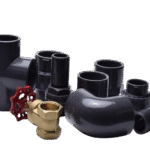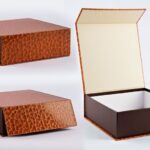Hearing that your newborn has positional talipes can be worrying for any parent. The good news is that this condition is both common and treatable. With the right guidance and gentle therapy, most babies recover completely within months. At the Body and Back Clinic, specialists work closely with families to help little ones develop normal foot movement and strength through personalized care.
In this article, we’ll explain what positional talipes is, what causes it, and how the Body and Back Clinic supports your baby’s healthy development with proven, parent-friendly treatment methods.
How the Body and Back Clinic Helps
The Body and Back Clinic takes a hands-on, family-focused approach to treating positional talipes. Their experienced physiotherapists and pediatric therapists understand how delicate an infant’s body is and use only the gentlest, safest techniques.
Thorough Assessment
Every child’s case is unique. The clinic begins with a full assessment to understand your baby’s foot flexibility, muscle tone, and range of motion. Parents are encouraged to be part of this process to learn how to continue stretches at home.
Gentle Stretching and Mobilization
Therapists use gentle manual therapy to stretch and guide the baby’s foot into the correct position. This helps loosen tight muscles and encourages the natural development of proper alignment.
Parent Education
Parents play a huge role in recovery. At the Body and Back Clinic, you’ll be shown how to safely perform simple stretches, massage techniques, and positioning exercises during daily routines such as diaper changes or bath time.
Monitoring Progress
Follow-up sessions ensure that the feet continue to develop properly. Most babies show improvement within a few weeks, and full correction is often seen by six months.
Understanding Positional Talipes
Positional talipes, also known as talipes equinovarus postural type or postural clubfoot, is a temporary condition that affects a baby’s feet at birth. Instead of pointing straight ahead, one or both feet may be turned slightly inwards or downwards. The key difference from true clubfoot is that positional talipes is due to muscle tightness not bone or structural deformity.
It often occurs because of limited space in the womb, especially during late pregnancy. Babies who sit breech, have less amniotic fluid, or share the womb with a twin are more likely to develop the condition. The good news? With proper movement, stretching, and reassurance, most cases resolve naturally within the first few months of life.
Common Signs and Symptoms
Parents usually notice:
- One or both feet turned inward or downward
- The ability to move the foot gently into a normal position
- Mild stiffness or tightness around the ankle
If you notice your baby’s feet looking slightly twisted but flexible, it’s likely positional talipes rather than a fixed deformity. However, it’s always best to have it checked by a qualified practitioner such as the pediatric specialists at the Body and Back Clinic, to confirm and begin gentle corrective care.
Why Early Treatment Matters
Although many babies outgrow positional talipes naturally, early attention helps ensure that the feet align correctly and prevents any long-term tightness or walking issues later on. The first few months after birth are when the muscles and joints are most flexible, making treatment highly effective.
A clinic like the Body and Back Clinic provides reassurance and structured guidance so you can feel confident that your baby’s feet are developing normally.
What Parents Can Do at Home
Therapists at the Body and Back Clinic encourage small, daily actions that make a big difference:
Positioning: Alternate how your baby lies or sits during play to prevent tightness on one side.
Tummy Time: Supervised time on the tummy helps strengthen legs, hips, and feet.
Gentle Massage: Lightly massaging the calf and foot encourages blood flow and flexibility.
Regular Check-ups: Continue visiting your physiotherapist until your baby’s movement is symmetrical and stable.
These simple habits support professional therapy and speed up progress.
How Positional Talipes Differs from Structural Clubfoot
It’s easy for parents to confuse positional talipes with structural clubfoot, but there are key differences. Structural clubfoot involves bone and tendon changes that require more intensive treatment, often including casting or surgery. Positional talipes, on the other hand, is purely muscular and responds beautifully to stretching and movement therapy.
A specialist at the Body and Back Clinic can quickly identify the difference and reassure you with a clear plan tailored to your baby’s needs.
Long-Term Outlook and Recovery
The outlook for babies with positional talipes is excellent. With regular stretching and guidance, most feet look and move normally within a few months. Occasionally, a child may need follow-up appointments as they start standing or walking, just to ensure even balance and coordination.
By combining early intervention with home support, the Body and Back Clinic helps families feel confident every step of the way from first diagnosis to full recovery.
Why Choose the Body and Back Clinic
Parents choose the Body and Back Clinic because of its reputation for compassionate care and evidence-based treatment. The therapists blend medical expertise with empathy, ensuring each session feels safe, calm, and supportive. The clinic’s holistic philosophy doesn’t just treat the foot it focuses on the entire body’s development.
Whether it’s positional talipes, torticollis, or general developmental milestones, the Body and Back Clinic provides the right care for your growing child.
Final Thoughts
Hearing the words positional talipes might sound intimidating, but with the right help, your baby’s feet can recover naturally and fully. Early guidance from professionals at the Body and Back Clinic ensures a smooth, gentle, and reassuring journey toward normal movement.
Your baby’s first steps should be strong, confident, and pain-free and that begins with the right support from experts who truly understand how the body heals and grows. reamore



